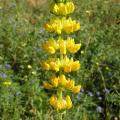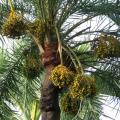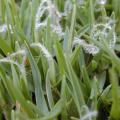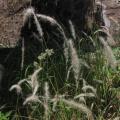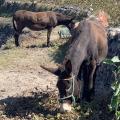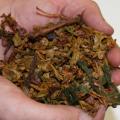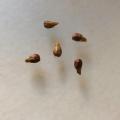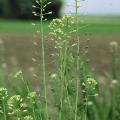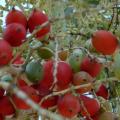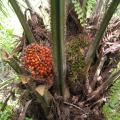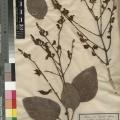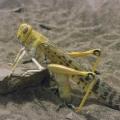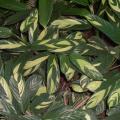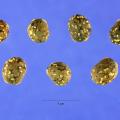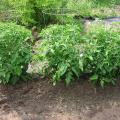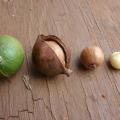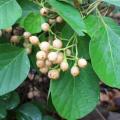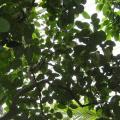Feedipedia news
After 13 years, it is time for the website to be upgraded! Before we start, we need your input.
Explore Feedipedia
|
Yellow lupin (Lupinus luteus L.) is one of the 200 species of lupins, a genus of... Read more |
Date fruit production yields several crop residues, including date palm leaves (fronds),... Read more |
Kikuyu (Pennisetum clandestinum Hochst. ex Chiov) is a tropical grass from... Read more |
|
Imperata cylindrica (L.) P. Beauv., known as speargrass in Nigeria, alang-alang... Read more |
The grapevine (Vitis vinifera L.) is a vine cultivated worldwide for its edible... Read more |
The grapevine (Vitis vinifera L.) is a vine cultivated worldwide for its edible... Read more |
|
The grapevine (Vitis vinifera L.) is a woody vine cultivated worldwide for its... Read more |
Grape seeds are a by-product of the pressing of grapevine (Vitis vinifera L.)... Read more |
Camelina (Camelina sativa (L.) Crantz) is an ancient oil and food crop with... Read more |
|
The peach palm (Bactris gasipaes Kunth) is a dual-purpose tropical tree... Read more |
Palm kernel meal is an important feed ingredient and the by-product of the oil palm (... Read more |
Dates, the fruits of the date palm tree (Phoenix dactylifera L.), are a major... Read more |
|
Adenodolichos paniculatus (Hua) Hutch. is a perennial woody multi-purpose shrub... Read more |
Locusts, grasshoppers (mostly Acrididae and Pyrgomorphidae), crickets (Gryllidae) and... Read more |
Arrowroot (Maranta arundinacea L.) is a tropical herb used for its tubers, which... Read more |
|
Blue lupin (Lupinus angustifolius L.) is one of the 200 species of lupins, a... Read more |
White lupin (Lupinus albus L.) is one of the 200 species of lupins, a genus of... Read more |
Tomato (Lycopersicon esculentum Mill.) leaves and crop residues (stubble, stalk... Read more |
|
The macadamia tree (Macadamia integrifolia Maiden & Betche, Macadamia... Read more |
The Assyrian plum (Cordia myxa L.) is a multipurpose, perennial, medium sized,... Read more |
The jackfruit tree (Artocarpus heterophyllus Lam.) is a tropical to subtropical... Read more |
Pages
Recent resources
 Opinion paper: Phasing out of the aid provided to the livestock sector during expectedly recurrent emergencies
- Makkar, 2024. animal
Opinion paper: Phasing out of the aid provided to the livestock sector during expectedly recurrent emergencies
- Makkar, 2024. animal
Open access opinion paper that makes a case that the emergency aid do more harm than good to African countries. It is valid for all the fields of agriculture but has direct consequence for animal agriculture. The context here is the aid provided during emergencies that are foreseeable recurrent.
The role of livestock in food security, poverty reduction and wealth creation in West Africa
- Molina-Flores et al., 2020. Food and Agriculture Organization of the United Nations Accra, 2020
Livestock is key to 377 million people in West Africa and in some countries, up to 60% of the population is involved in livestock production. The demand for animal products is increasing with population growth, urbanization, growing middle class, and due to shifting consumer preferences towards animal products. To meet this growing demand, countries in West Africa must engage in accelerated sustainable livestock production undertaking. Livestock development is key to eradicate hunger and poverty. This book attempts to provide up-to-date, and reliable information on the potentials, opportunities, and challenges of the livestock subsector in West Africa.
Pulses and their by-products as animal feed
- Sherasia et al., 2017. In: Calles, T.; Makkar, H. P. S. (Eds), FAO, Food and Agriculture Organization of the United Nations, Rome, Italy
This document provides a state-of-the-art review of the recent research (published and unpublished) on the use of pulses and their by-products as animal feed. It aims at raising awareness on the use of pulses and their by-products. It highlights the nutritional role of pulses and pulse by-products as animal feed and is a contribution to the legacy of the 2016 International Year of Pulses. This document will further enhance the use of these feed resources in other continents, besides Asia, where many pulse by-products are simply dumped. It is also expected that the synthesis presented contributes to make the use of pulses and their by-products as animal feed more efficient. This document will be useful for extension workers, researchers, feed industry, policy-makers and donors alike.











